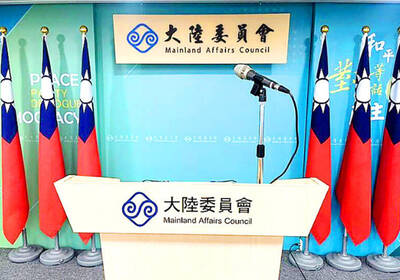The peer-to-peer world of the Internet is taking a step onto the nation's freeways in a cellphone application that aims to offer up-to-the-second traffic information.
Until now peer-to-peer networks have conjured up file-sharing systems like Napster and Kazaa or social networking organizations like Friendster, Orkut and Linked-in.
But Zipdash, a startup in Palo Alto, California, hopes to take advantage of the growing number of mobile telephones with global positioning satellite receivers to gather the travel speeds of thousands or tens of thousands of drivers, displaying highway conditions as maps on cellphone screens.
The Zipdash application displays a map of traffic speeds as green, yellow and red arrows, graphically representing traffic jams and bottlenecks. The company plans to add features, including route planning and accident alerts. The service will be free to cellphone users and Zipdash is planning to create a business by selling accurate traffic information to Web sites and other publishers.
The system is available in the Bay Area and is expected to be extended nationally in the coming months.
"The demand for traffic data is very real," said Rich Miller, a wireless industry consultant at Breo Consulting in Palo Alto. "The guys who crack the code are going to make a lot of money eventually, but a lot of people will be working on this idea."
Currently in many states, highway departments offer some traffic information drawn from sensor networks embedded in freeways that report speeds and fixed cameras that monitor different choke points. By contrast, the Zipdash system uses both traffic data gathered from individual travelers as well as additional information from taxi and trucking and shuttle fleets. That allows a much finer picture of traffic patterns than what is available with sensor data.
privacy concerns
The company said the new system did not raise privacy issues because no data about individuals was gathered from the wireless carriers, only location, direction and speed information.
The global-positioning-system receivers are being added to cellphones in response to regulations issued by the Federal Communications Commission requiring wireless carriers to provide location information accurate to within 100m.
Nextel is the first major cellphone service provider to make commercial applications like Zipdash's available. Verizon, the nation's largest wireless carrier, plans to begin offering commercial location information capabilities later this year.
Zipdash is the brainchild of three entrepreneurs with backgrounds in a variety of Silicon Valley startups and technology firms.
`Traffic angst'
Two, Mark Crady and Michael Chu, are electrical engineers who have worked at Intel and Palm and have consulted for wireless carriers. The third, Diprenda Nigram, has been a consultant at Booz Allen Hamilton and worked at AOL in business development.
The initial Zipdash idea was sparked by the possibility of using the wireless Internet to make travel more efficient in terms of time and energy, said Crady, who is the nephew of Andrew Grove, Intel's chairman and co-founder.
Having precise information, Crady said, about traffic conditions on freeways changes the entire experience of driving in crowded urban areas.
"Maybe I have more traffic angst than the next guy," he said, "but I think this information is a real value."
Pioneering system
The system is one of the first examples of wireless location-specific information. Using cellphones to deliver information and advertising to users in specific locations has long been seen by Silicon Valley venture capitalists and entrepreneurs as one of the areas ripe for commercial development. But it has been slow to develop because of concerns about privacy and the ownership of information.

SEPARATE: The MAC rebutted Beijing’s claim that Taiwan is China’s province, asserting that UN Resolution 2758 neither mentions Taiwan nor grants the PRC authority over it The “status quo” of democratic Taiwan and autocratic China not belonging to each other has long been recognized by the international community, the Mainland Affairs Council (MAC) said yesterday in its rebuttal of Beijing’s claim that Taiwan can only be represented in the UN as “Taiwan, Province of China.” Chinese Minister of Foreign Affairs Wang Yi (王毅) yesterday at a news conference of the third session at the 14th National People’s Congress said that Taiwan can only be referred to as “Taiwan, Province of China” at the UN. Taiwan is an inseparable part of Chinese territory, which is not only history but

CROSSED A LINE: While entertainers working in China have made pro-China statements before, this time it seriously affected the nation’s security and interests, a source said The Mainland Affairs Council (MAC) late on Saturday night condemned the comments of Taiwanese entertainers who reposted Chinese statements denigrating Taiwan’s sovereignty. The nation’s cross-strait affairs authority issued the statement after several Taiwanese entertainers, including Patty Hou (侯佩岑), Ouyang Nana (歐陽娜娜) and Michelle Chen (陳妍希), on Friday and Saturday shared on their respective Sina Weibo (微博) accounts a post by state broadcaster China Central Television. The post showed an image of a map of Taiwan along with the five stars of the Chinese flag, and the message: “Taiwan is never a country. It never was and never will be.” The post followed remarks

INVESTMENT WATCH: The US activity would not affect the firm’s investment in Taiwan, where 11 production lines would likely be completed this year, C.C. Wei said Investments by Taiwan Semiconductor Manufacturing Co (TSMC, 台積電) in the US should not be a cause for concern, but rather seen as the moment that the company and Taiwan stepped into the global spotlight, President William Lai (賴清德) told a news conference at the Presidential Office in Taipei yesterday alongside TSMC chairman and chief executive officer C.C. Wei (魏哲家). Wei and US President Donald Trump in Washington on Monday announced plans to invest US$100 billion in the US to build three advanced foundries, two packaging plants, and a research and development center, after Trump threatened to slap tariffs on chips made

CONSISTENT COMMITMENT: The American Institute in Taiwan director said that the US would expand investment and trade relationships to make both nations more prosperous The US would not abandon its commitment to Taiwan, and would make Taiwan safer, stronger and more prosperous, American Institute in Taiwan Director Raymond Greene said. “The US’ commitment to Taiwan has been consistent over many administrations and over many years, and we will not abandon our commitment to Taiwan, including our opposition to any attempt to use force or coercion to change Taiwan’s status,” he said in an exclusive interview with the Liberty Times (the sister newspaper of the Taipei Times) on Friday last week, which was published in the Chinese-language newspaper yesterday. The US would double down on its efforts